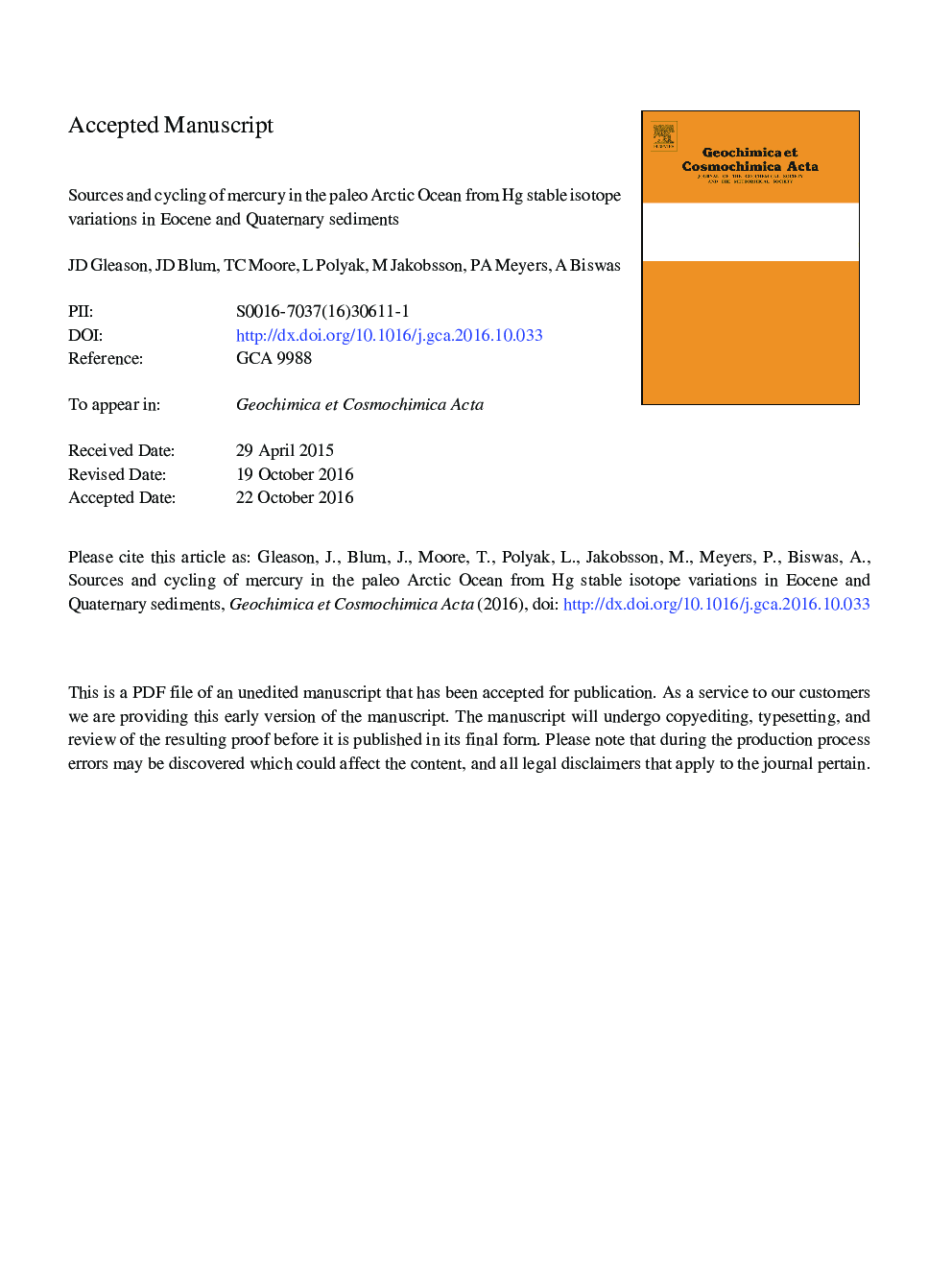| کد مقاله | کد نشریه | سال انتشار | مقاله انگلیسی | نسخه تمام متن |
|---|---|---|---|---|
| 8911047 | 1637960 | 2017 | 52 صفحه PDF | دانلود رایگان |
عنوان انگلیسی مقاله ISI
Sources and cycling of mercury in the paleo Arctic Ocean from Hg stable isotope variations in Eocene and Quaternary sediments
دانلود مقاله + سفارش ترجمه
دانلود مقاله ISI انگلیسی
رایگان برای ایرانیان
کلمات کلیدی
موضوعات مرتبط
مهندسی و علوم پایه
علوم زمین و سیارات
ژئوشیمی و پترولوژی
پیش نمایش صفحه اول مقاله

چکیده انگلیسی
Mercury stable isotopic compositions were determined for marine sediments from eight locations in the Arctic Ocean Basin. Mass dependent fractionation (MDF) and mass independent fractionation (MIF) of Hg stable isotopes were recorded across a variety of depositional environments, water depths, and stratigraphic ages. δ202Hg (MDF) ranges from â2.34â° to â0.78â°; Î199Hg (MIF) from â0.18â° to +0.12â°; and Î201Hg (MIF) from â0.29â° to +0.05â° for the complete data set (n = 33). Holocene sediments from the Chukchi Sea and Morris Jesup Rise record the most negative Î199Hg values, while Pleistocene sediments from the Central Arctic Ocean record the most positive Î199Hg values. The most negative δ202Hg values are recorded in Pleistocene sediments. Eocene sediments (Lomonosov Ridge) show some overlap in their Hg isotopic compositions with Quaternary sediments, with a sample of the Arctic Ocean PETM (56 Ma) most closely matching the average Hg isotopic composition of Holocene Arctic marine sediments. Collectively, these data support a terrestrially-dominated Hg source input for Arctic Ocean sediment through time, although other sources, as well as influences of sea ice, atmospheric mercury depletion events (AMDEs), and anthropogenic Hg (in core top samples) on Hg isotopic signatures must also be considered.
ناشر
Database: Elsevier - ScienceDirect (ساینس دایرکت)
Journal: Geochimica et Cosmochimica Acta - Volume 197, 15 January 2017, Pages 245-262
Journal: Geochimica et Cosmochimica Acta - Volume 197, 15 January 2017, Pages 245-262
نویسندگان
J.D. Gleason, J.D. Blum, T.C. Moore, L. Polyak, M. Jakobsson, P.A. Meyers, A. Biswas,